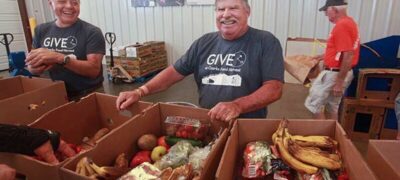Transfer of Wealth
The 5 Percent Solution is one way to leave a legacy.

The 5 Percent Solution is one way to leave a legacy.
When individuals and families decide how to pass on their financial and physical assets, they are participating in the national transfer of wealth that in Missouri alone will amount to more than $114 billion over the next 10 years.
That finding is included in the 2023 Missouri Transfer of Wealth Study, released today by the Alliance of Missouri Community Foundations with support from the Patterson Family Foundation in Kansas City. The goal of the Alliance is to encourage Missouri residents to consider allocating at least 5% of the assets they will pass on after their lifetimes to benefit their communities and favorite charitable causes.
If that happened, Missouri’s nonprofit and philanthropic organizations would receive more than $7.6 billion over the next 10 years to supplement other public and private funding sources that support areas like human services, education, the arts, community amenities, recreation and the environment, faith, youth, animal welfare and more. Even if all that money were endowed, meaning a portion is spendable while the principal stays intact to grow over time, a payout of 5% would create $383 million in new resources annually.
The 2023 Transfer of Wealth Study was conducted for the Alliance by the Center for Civic Research and Innovation at the University of Missouri. It uses a variety of data sources and demographic trends to estimate Missourians’ current net worth and the potential wealth to be transferred based on household size, life expectancy and wealth distribution. The full study is linked above.
“The potential benefits to our communities and nonprofit sector would be staggering if Missourians adopted the ‘5% Solution’ to include their charitable intentions in their estate and financial planning,” said Mary Hinde, leader of the AMCF and president/CEO of the Community Foundation of Northwest Missouri, based in St. Joseph. “Missourians are known for their ‘show-me’ determination. This study shows us what’s possible if we all give a little to support the greater good.”
The 2023 study updates the original study from 2013. It notes demographic trends, including Missouri’s aging population with a larger proportion of the population reaching retirement age, which increases the amount of wealth being transferred between generations. Missouri also is experiencing population loss in some areas, particularly rural counties.
“Since the 2013 study, we have seen dramatic and transformational examples of the transfer of wealth, particularly in our rural region,” said Brian Fogle, president emeritus of the Community Foundation of the Ozarks, based in Springfield with about a 60-county service area. “Just in the past three years alone, we have received over $25 million in planned gifts, the majority being in rural places. We have counties where nearly every high school student can receive scholarship support to continue their education, thanks to legacy gifts. We have nonprofits that will have guaranteed income every year thanks to designated endowments that generous community members included in their estate plans. This study will help us continue to build the concept of including 5% for your community.”
The AMCF encourages Missourians to talk to their families and financial advisors about their charitable intentions during their estate planning. Members of the Alliance work with donors and their advisors on how to achieve their intentions through the wide variety of fund types and other charitable tools available to fulfill their goals.